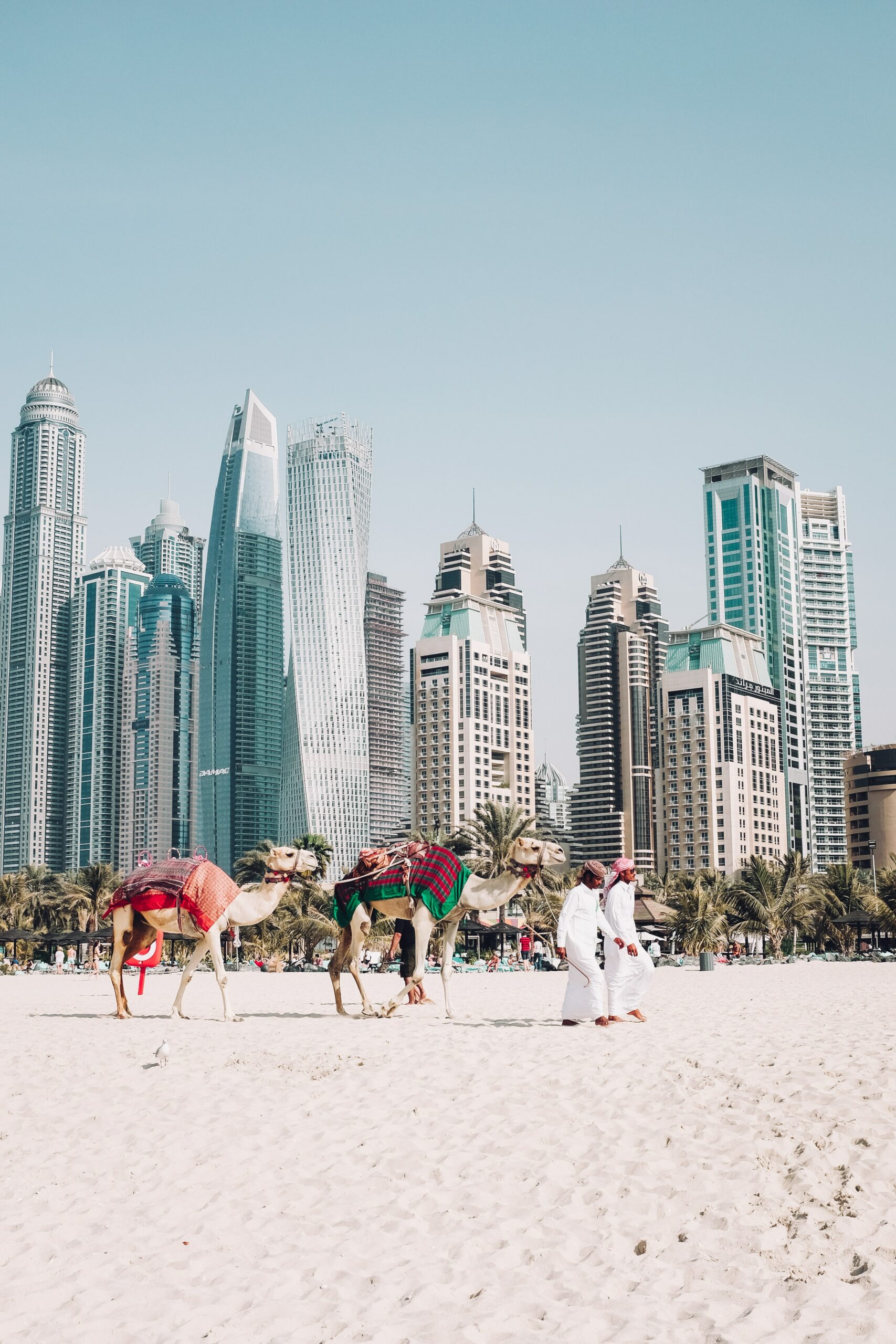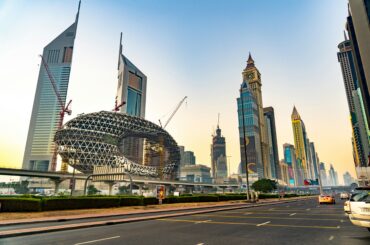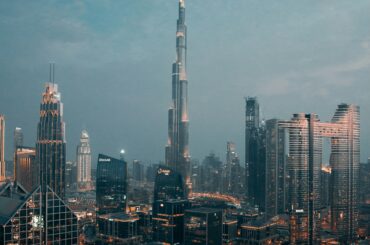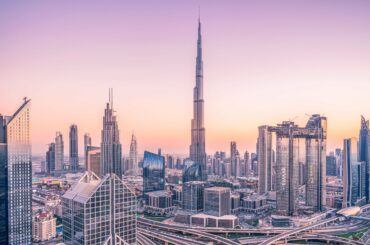Dubai, the gleaming gem of the United Arab Emirates, has undergone a remarkable transformation that has shaped its distinct identity. The city’s metamorphosis can be witnessed through the emergence of two contrasting phases: Old Dubai and New Dubai. Understanding the differences between these two phases is crucial to appreciating the captivating tale of Dubai’s evolution and the synthesis of tradition and modernity that defines the city today.
Dubai’s journey began with the humble origins of Old Dubai, which revolved around the historic Dubai Creek. Here, the city’s cultural heritage was cultivated, and the foundations of a bustling trading hub were laid. As time passed, Dubai’s ambitions soared, leading to the birth of New Dubai, a realm of innovation and architectural marvels that has thrust the city into the global spotlight.
Recognizing the disparities between Old Dubai and New Dubai allows us to delve into the essence of the city’s remarkable growth. It unveils this multifaceted metropolis’s contrasting architectural styles, lifestyles, and entertainment options. Furthermore, comprehending these differences sheds light on the city’s commitment to preserving its rich history while embracing groundbreaking modern developments.
In exploring Old Dubai and New Dubai, we embark on a captivating journey through time and witness the fusion of tradition and modernity. By unraveling the tapestry that weaves together these two phases, we gain a deeper appreciation for Dubai’s unique identity and transformative spirit. Join us as we uncover the beautiful contrasts and the harmonious blend that define this extraordinary city.
Contents
Old Dubai: Preserving the City’s Heritage
Old Dubai, with its rich history and cultural treasures, serves as a testament to the city’s roots and the preservation of its heritage. Let’s delve into the distinct aspects that make Old Dubai a treasure trove of tradition and charm.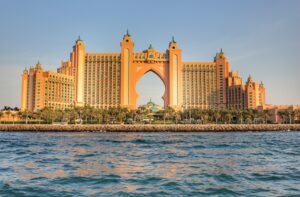
Historical Background of Old Dubai:
Old Dubai traces its origins back to the early 19th century when it served as a vital trading port along Dubai Creek. The creek was the city’s lifeline, connecting it to neighboring regions and fostering prosperous maritime trade.
Cultural and Architectural Highlights:
At the heart of Old Dubai lies the iconic Dubai Creek, where traditional dhows (wooden cargo boats) still ply their trade, showcasing the city’s historical maritime connections. This bustling waterway embodies the essence of the region’s trade and provides a picturesque backdrop.
The souks of Old Dubai are enchanting hubs that captivate visitors with their vibrant atmosphere and authentic products. The Gold Souk, an Aladdin’s cave of gleaming jewelry, entices visitors with its dazzling displays. The Spice Souk offers a sensory journey through aromatic spices, while the Textile Souk beckons with its colorful fabrics and textiles.
The Al Fahidi Historic District, formerly known as Bastakiya, is a treasure trove of traditional Arabian architecture. Its narrow alleyways are lined with restored courtyard houses, showcasing traditional wind towers (Barajeel) that provided natural ventilation in the past. One of the district’s highlights is the Al Fahidi Fort, which now houses the Dubai Museum. It offers a glimpse into the city’s past, displaying artifacts and exhibits that narrate Dubai’s fascinating history.
Lifestyle and Experiences in Old Dubai:
Exploring the traditional markets of Old Dubai is a sensory delight. Meandering through the narrow streets of the souks, visitors can immerse themselves in a world of scents, colors, and flavors. From haggling for unique treasures to sampling local spices, the markets offer an authentic Arabian shopping experience.
Old Dubai tantalizes taste buds with its array of traditional Arabian cuisine. From mouthwatering kebabs and shawarmas to delectable mezze spreads and aromatic Arabic coffee, the culinary experiences in Old Dubai are a delight for food enthusiasts. Traditional dining establishments, known as Arabic cafeterias, offer a glimpse into the local culture and serve delectable dishes.
Heritage and cultural events bring Old Dubai to life. Festivals like the Dubai Shopping Festival and the Dubai Food Festival celebrate the city’s heritage, showcasing traditional arts, crafts, music, and dance. The annual Dubai Heritage Week offers a platform to learn about Emirati traditions, customs, and craftsmanship.
In Old Dubai, every corner holds a story, and every experience is steeped in heritage. It is a living testament to the city’s rich past and the determination to preserve its cultural legacy for future generations.
New Dubai: The Rise of Modernity and Innovation
New Dubai is a testament to the city’s relentless pursuit of progress and ambition to create a futuristic and cosmopolitan destination. Let’s explore the key elements that define New Dubai and make it a hub of modernity and innovation.
The Growth and Development of New Dubai:
As Dubai’s ambitions soared, it gave birth to New Dubai, a region that showcases the city’s cutting-edge developments and visionary projects. A strategic focus on urban planning, infrastructure development, and architectural marvels has fueled the growth of New Dubai.
Architectural Wonders and Modern Landmarks:
New Dubai boasts an impressive skyline adorned with architectural marvels that have redefined the city’s skyline. The crown jewel is the iconic Burj Khalifa, the world’s tallest building, soaring majestically into the sky and offering panoramic city views. Another iconic symbol of luxury and opulence is the Burj Al Arab, a sail-shaped hotel that epitomizes Dubai’s reputation as a playground for the affluent.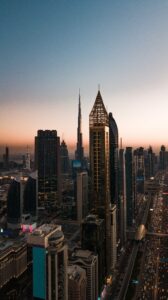
Dubai Marina, a sprawling waterfront district, is a testament to modern urban planning. Its upscale residential towers, yachts bobbing in the marina, and lively promenade offer a luxurious and vibrant lifestyle for residents and visitors alike. Palm Jumeirah, an iconic artificial island shaped like a palm tree, is a marvel of engineering and home to extravagant resorts, hotels, and residential communities.
Lifestyle and Experiences in New Dubai:
New Dubai beckons with its array of luxury shopping malls and entertainment complexes. The Dubai Mall, a shopper’s paradise, offers a fusion of high-end boutiques, luxury brands, and extravagant experiences. From fashion shows to art galleries and indoor aquariums, it provides a one-of-a-kind retail experience.
Fine dining takes center stage in New Dubai, with many world-class restaurants and culinary experiences. From Michelin-starred establishments to celebrity chef-owned eateries, the dining scene in New Dubai caters to every palate, offering a fusion of international flavors and innovative gastronomic creations.
For thrill-seekers, New Dubai is home to thrilling theme parks and recreational activities. The adrenaline-pumping rides at IMG Worlds of Adventure and the family-friendly attractions at Dubai Parks and Resorts provide entertainment for visitors of all ages. Adventure seekers can indulge in various activities, including desert safaris, skydiving, and water sports along the city’s stunning coastline.
New Dubai presents a lifestyle that exudes luxury, opulence, and modernity. It is a vibrant hub where innovation, entertainment, and extravagance converge to create unforgettable experiences.
In the tapestry of Dubai’s development, the contrasts between Old Dubai and New Dubai weave together to create a city that cherishes its heritage while embracing progress. Together, they form a captivating story of a city that has transformed into a global powerhouse while retaining its cultural roots and embracing the future with open arms.
Contrasts and Synergy: Blending the Old and the New in Dubai
Dubai, a city of remarkable contrasts, thrives on the harmonious coexistence of Old Dubai and New Dubai. Let’s explore the intriguing interplay between these two phases and the distinct contrasts and synergies that define the city.
Comparing Architectural Styles and Infrastructure:
Old Dubai showcases traditional Arabian architecture, with its historic districts adorned with wind towers (Barajeel) and traditional courtyard houses. In contrast, New Dubai boasts a skyline dominated by futuristic skyscrapers and architectural wonders like the Burj Khalifa and Burj Al Arab. The architectural styles of Old Dubai reflect its heritage, while New Dubai stands as a testament to the city’s ambition and technological advancement.
Contrasting Lifestyles and Entertainment Options:
Old Dubai offers a glimpse into the city’s traditional way of life, with its bustling souks, cultural events, and a slower-paced ambiance. It caters to those seeking an authentic experience steeped in Emirati culture and heritage. In contrast, New Dubai is synonymous with luxury, opulence, and a cosmopolitan lifestyle. It entices residents and visitors with upscale shopping malls, fine dining experiences, and thrilling entertainment options like theme parks and water sports. The lifestyles in both phases are distinctly different, appealing to diverse preferences and desires.
Residential Areas and Accommodation Choices:
Old Dubai retains its traditional residential neighborhoods, where residents can experience the authenticity of Emirati living. These areas connect closer to the city’s history and cultural roots. In contrast, New Dubai boasts modern and luxurious residential communities featuring high-rise towers, waterfront properties, and gated communities that cater to a more contemporary and upscale lifestyle. The accommodation choices in Dubai cater to a wide range of preferences, ensuring residents can find a home that aligns with their desired lifestyle.
The Evolution of Business and Commerce:
Old Dubai reflects its historical significance as a trading hub, with traditional markets and trading routes still preserved today. The souks continue to be vibrant centers of commerce where traditional trades are kept alive. In contrast, New Dubai has evolved into a global business and financial hub, with modern infrastructure and international corporations calling it home. The towering skyscrapers and state-of-the-art office spaces represent the city’s transformation into a modern economic powerhouse. The juxtaposition of these two phases demonstrates Dubai’s ability to honor its past while embracing future opportunities.
Coexistence and Blending of Old and New: A Harmonious Tapestry in Dubai
Dubai is a city where the threads of Old Dubai and New Dubai are intricately woven together, creating a captivating tapestry of tradition and modernity. Let’s explore how these two phases coexist and blend harmoniously, preserving heritage while embracing progress.
The Interconnectedness of Old Dubai and New Dubai:
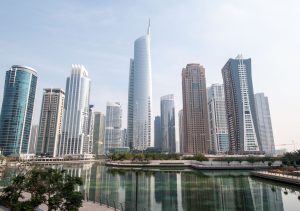
Old Dubai and New Dubai are not isolated entities but rather interconnected parts of the same city. The historic Dubai Creek, the heart of Old Dubai, plays a significant role in the city’s economy and culture. It serves as a waterway for traditional dhow trading, connecting Old Dubai with the modern developments along its shores. The symbiotic relationship between these phases ensures a continuous flow of traditions, trade, and cultural exchange.
Initiatives to Preserve Heritage in Modern Developments:
Dubai is committed to preserving its rich heritage amidst rapid modernization. In New Dubai’s development, deliberate efforts are to incorporate elements of Emirati culture and heritage. This can be seen in the architectural designs that draw inspiration from traditional Emirati motifs, incorporating local materials and preserving historical landmarks. The city has implemented strict guidelines for developers to integrate traditional elements into their projects, ensuring a seamless blend of old and new.
Examples of Projects that Showcase the Harmony of Tradition and Modernity:
Dubai is replete with projects beautifully showcasing the harmony between tradition and modernity. One notable example is the Dubai Opera, a contemporary architectural masterpiece in Downtown Dubai. Its design pays homage to the traditional dhow, symbolizing the city’s maritime heritage while serving as a modern venue for world-class performances.
Another remarkable project is the Al Seef development along Dubai Creek. It recreates the ambiance of a traditional Emirati neighborhood with its winding alleys, courtyards, and traditional-style buildings. Here, visitors can experience the charm of Old Dubai while enjoying modern amenities, restaurants, and shopping.
Furthermore, the Dubai Frame stands tall as a symbol of the city’s vision for the future while embracing its past. This massive architectural structure frames the view of Old Dubai on one side and the modern skyline of New Dubai on the other, symbolizing the seamless blend of history and progress.
These projects exemplify Dubai’s commitment to preserving heritage while embracing modernity, creating spaces that honor the past while catering to the needs and aspirations of the present and future.
In Dubai, the coexistence and blending of Old Dubai and New Dubai is not just a juxtaposition but a celebration of the city’s diverse heritage and dynamic spirit. It is a testament to the city’s ability to evolve without losing roots and create a truly unique and captivating destination where tradition and modernity walk hand in hand.
Conclusion
Dubai, with its contrasting phases of Old Dubai and New Dubai, presents a captivating tale of transformation, where tradition and modernity converge to create a vibrant and dynamic city. Throughout our exploration, we have witnessed these two phases’ distinct differences and highlights, from the historical charm of Old Dubai’s souks and cultural landmarks to the futuristic marvels of New Dubai’s skyscrapers and luxury experiences.
The unique identity of Dubai lies in its ability to preserve its rich heritage while embracing progress. The city’s commitment to preserving historical sites and integrating traditional elements into modern developments is commendable. Dubai has successfully crafted a harmonious blend where the old and the new coexist, creating a one-of-a-kind atmosphere that captivates visitors from around the world.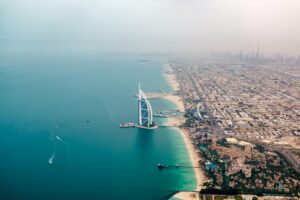
Appreciating Dubai’s evolution means acknowledging its past while marveling at its present achievements. The city has risen from humble beginnings as a trading port to become a global hub of commerce, innovation, and luxury. The transformation of Dubai showcases its unwavering determination to push boundaries, defy expectations, and create a future that seamlessly blends tradition with modernity.
More articles :

